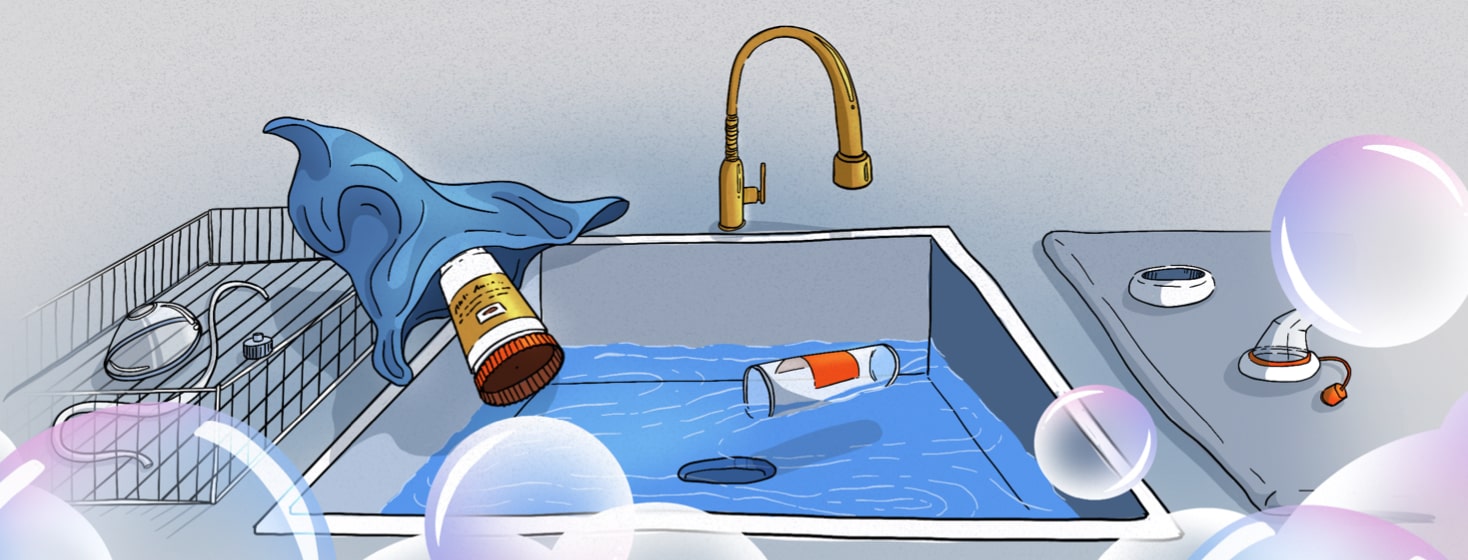Methods for Cleaning Your Equipment
Editor's Note: Always refer to your healthcare team or device manufacturer if you have questions about cleaning your equipment.
People with COPD often have various equipment to help with breathing. All of this equipment can and should be cleaned from time to time.
Listed here are your most common respiratory devices, how best to clean them, and how often to clean them.
Aerosol delivery devices
Medicine can deposit over the part of the inhaler that aerosolizes the medicine. This can affect the drug delivery to your lungs.
Dust or dirt particles can get inside the inhaler, and you certainly don’t want to inhale them. Likewise, germs can also build up inside the inhaler. Cleaning these devices can keep your lungs free and clear of particles or germs and also ensure that they work as intended.1
Inhalers
I believe most inhalers, regardless of type, come with a cap that goes over the mouthpiece. It is important to make sure the cap is replaced after every use.
This helps keep dirt and particles away from the hole where the medicine is aerosolized. This is important, as it will prevent you from inhaling particles and keep the device clean.
- Controller Inhalers: Dry powder inhalers (DPI) should not be placed in water. If necessary, you can wipe the mouthpiece with a dry cloth. Soft mist inhalers (SMIs) can also be wiped clean with a dry cloth.
2 - Rescue inhalers: Most of these types of inhalers tend to be metered dose inhalers (MDIs). MDIs contain a canister inserted inside a plastic actuator or boot. And the recommendation is that they be washed at least once per week. You should also wash them if the mist becomes weak and/or if you see medicine buildup in the hole where the canister fits into the boot. It is recommended that the canister be removed from the boot and not washed. The plastic boot should be soaked with dish soap and water. It should then be rinsed and placed on a towel to air dry. Note: It is always a good idea to read the cleaning instructions on the package insert for your inhaler device.1
- Spacers: Medicine can build up inside spacers. You may not see this buildup with the naked eye. Although, if you go long enough without washing them, you will see the white buildup inside the device. And so they should be cleaned as needed. Or, we typically recommend that they be cleaned at least once a week, such as when you wash your MDI. Most spacers can be taken apart. The parts can then be cleaned in the sink using soap and water. Then they can be set aside on a towel to air dry. Do not dry the inside of the spacer with a towel, as this can affect the static electricity inside of it, which is necessary for it to function properly.1
- Jet Nebulizers:
Like spacers, nebulizers have various parts that can be taken apart. Also, like spacers, they can be washed with soap and water. Or they can be placed in a basket and on the dishwasher's top rack. You can wash your nebulizer with white vinegar and water in a small bowl. After soaking, rinse with water and let air dry on a towel. As a child, I was taught to wash with vinegar and water. Although, many experts now simply recommend the soap and water method.
Other devices
Acapellas
These should be washed on a daily basis. The mouthpiece of acapella devices can usually be separated from the body. The mouthpiece and the body of the device should be wiped down with soap and water. The parts should also be soaked once per week in isopropyl alcohol or hydrogen peroxide.Sup>3
Nasal Cannulas
The nose pieces of a cannula go directly into your nose. So you will want it to be free and clear of germs. Therefore, the nose part of the cannula should be washed on a weekly basis with soap and water. The cannula should be replaced every 2-4 weeks.4
Oxygen tubing
You do not need to wash oxygen tubing. Although, it should be replaced every two months.4
Oxygen masks
Some people use oxygen masks instead of mouthpieces to take breathing treatments. The recommendation is to wash your mask every week with soap and water. And replace it every 2-4 weeks.4
Other
Nebulizer air compressors all have filters that need to be changed occasionally. Not changing them can affect the flow generated, making the mist weaker and ineffective.
Mesh nebulizers also need to be cleaned to work effectively. BiPAP and CPAP devices need to be cleaned. For all of these devices, I will defer to the manufacturer’s recommendations or the home office equipment supplier you get them from.
What about you?
Were you instructed on how best to wash your equipment? Do you wash it regularly? Please share in the comments below.

Join the conversation